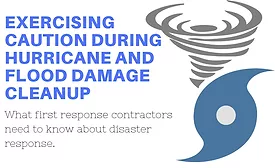Home » biohazard cleanup
Articles Tagged with ''biohazard cleanup''
Exercising Caution During Hurricane and Flood Damage Cleanup
What first response contractors need to know about disaster response.
Read More
Stay ahead of the curve with our eNewsletters.
Get the latest industry updates tailored your way.
JOIN TODAY!Copyright ©2025. All Rights Reserved BNP Media.
Design, CMS, Hosting & Web Development :: ePublishing










